Patents
Apparatus for secretly recording the reading behaviour of a person
Herbert Wettig's patent (granted by the UK patent office in 1971 — GB1241156) details how to hide a television camera in a light fixture for the purpose of "secretly recording the reading behaviour of a person unbeknowst to him."Why would someone want to do this? Apparently for marketing research.
Wettig noted that researchers had previously been doing this in specially designed test rooms. The advantage of his invention, he said, was that it was easily transportable and could be set up discreetly in many different places without arousing suspicion. I'm assuming he's talking about spying on library patrons, since libraries are the most obvious place where people spend a lot of time in public reading.
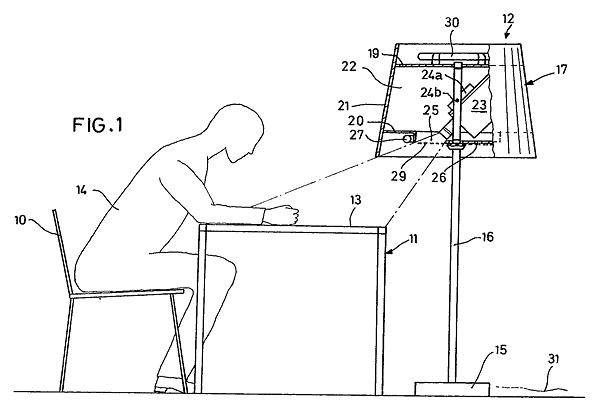
Posted By: Alex - Thu Oct 06, 2022 -
Comments (2)
Category: Patents
The Water Unicycle
Full patent here.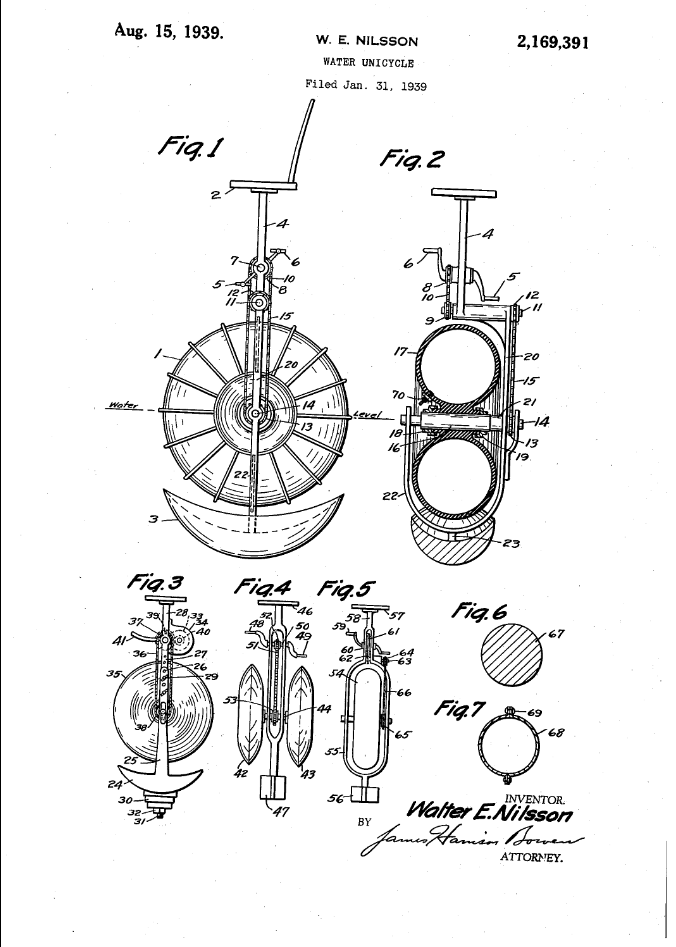
POPULAR MECHANICS source.
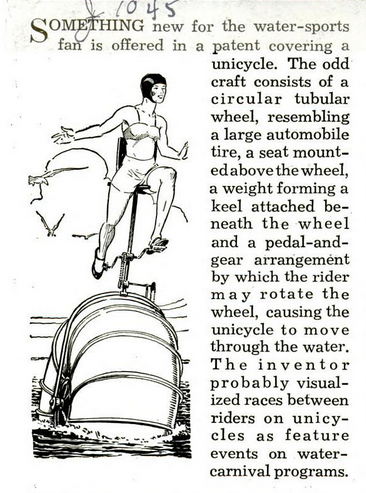
Posted By: Paul - Sat Oct 01, 2022 -
Comments (0)
Category: Inventions, Chindogu, Patents, Oceans and Maritime Pursuits, Ridiculousness, Foolishness, Public Ridicule, Silliness, Goofiness and Dumb-looking, 1930s, 1940s
Counterpoised Cranial Support for Eyewear
Full patent here (with other devices included!).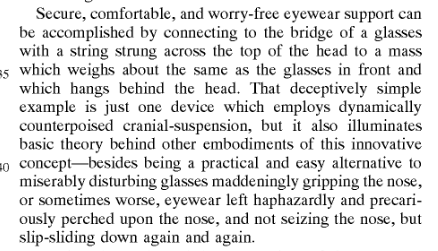
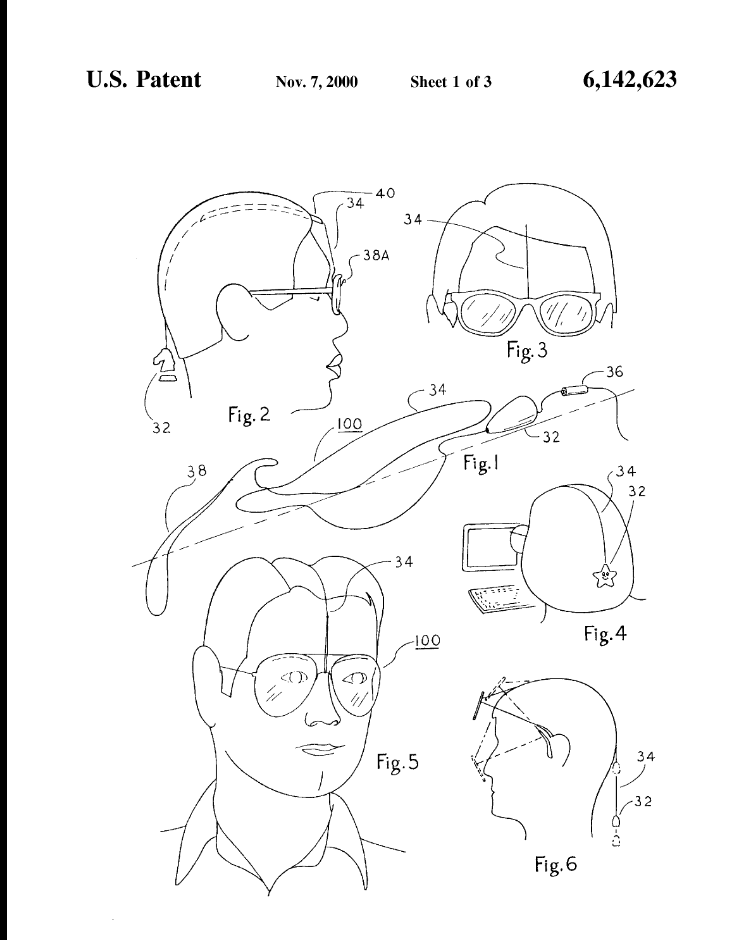
Posted By: Paul - Sun Sep 25, 2022 -
Comments (2)
Category: Inventions, Patents, Ridiculousness, Foolishness, Public Ridicule, Silliness, Goofiness and Dumb-looking, 2000s, Eyes and Vision
Combined coat hanger and musical instrument
I wonder if Louis Jacobs thought he was going to strike it rich when he came up with his idea for a "combined hanger and musical instrument." From his 1918 patent:The object of the present invention is to provide a device for hanging shoes and other articles, and which can also be used as a musical instrument.

But how did it work as a musical instrument? Again from his patent:
I can just imagine Jacobs talking to deaf people through his musical coat hanger.
Posted By: Alex - Sat Sep 17, 2022 -
Comments (4)
Category: Music, Patents, 1910s
Dead Bird Decoy Holder
When a wooden or plastic decoy just won't do!Full patent here.
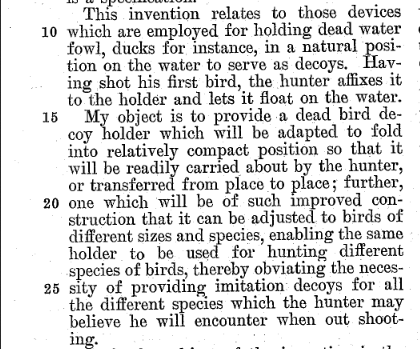
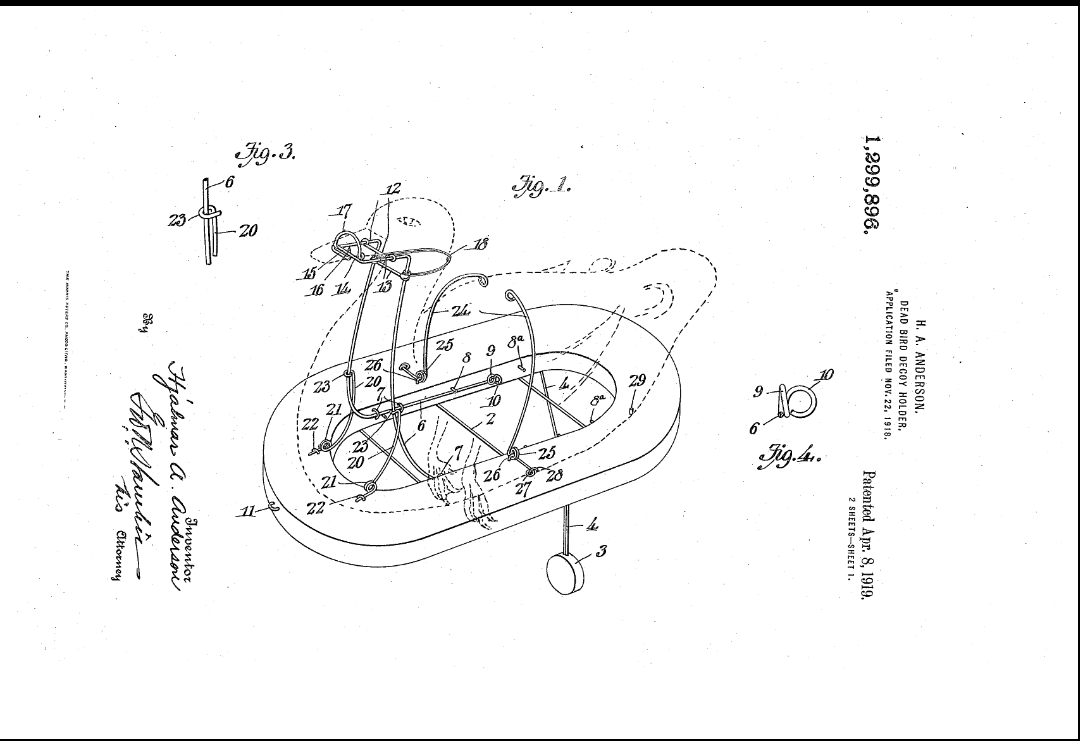
Posted By: Paul - Mon Sep 12, 2022 -
Comments (0)
Category: Animals, Hunting, Trapping and Other Wilderness Activities, Imitations, Forgeries, Rip-offs and Faux, Patents, 1910s
Face mask with simulated nose hairs
Uday Singh of Bloomfield, NJ was recently granted Patent No. 11413194 for a face mask with simulated nose hairs.The idea is that having openings protected by "filter material" (aka fake nose hairs) will solve the problem of mask fogging.
Singh refers to his invention as "an aesthetically pleasing covering for protecting otherwise exposed nasal and/or other facial surfaces." Based on the picture below, 'aesthetically pleasing' isn't the first term that comes to mind.

via Jeff Steck
Posted By: Alex - Tue Sep 06, 2022 -
Comments (2)
Category: Costumes and Masks, Patents
Instant Facelift Device
In 1971, Leah Heale of San Jose, CA was granted Patent No 3,575,165 for this rather uncomfortable looking "facelift device." From the patent: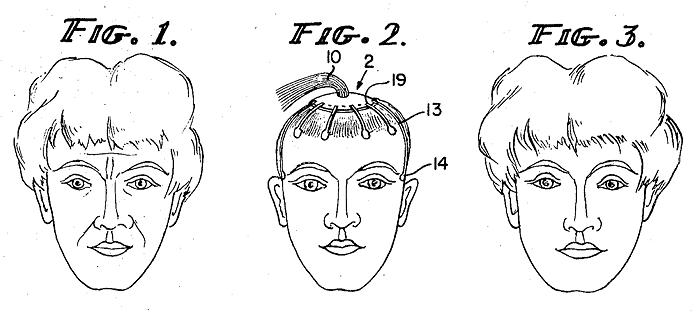
A discussion of it New Scientist magazine (Aug 15, 1974):
And according to researchers in the General Motors laboratories examining the reactions of the human body in accident situations, some expertise may be vital in judging the degree of tension applied to the temple-grippers. The GM people reported that the scalp, notably tough and elastic, can stand forces up to 610 lb per square inch before tissue damage sets in. Facial covering is less resistant and that over the cheekbones shows wear and tear at a load of 208 lb. So tensing the scalp-hackles to anything much over a third of their overhead capacity might well result in the beauty-seeker finding herself instead with her nose coming away at the seams and her ears getting a divorce from her cranium.
And even if all tensilities were precisely adjusted, one cannot banish the feeling that the taut-faced beauty, though smoother-cheeked than any baby's bottom, would have her brows so steeply arched and her eyes so shockingly widened that she would spend her day bearing a look of permanent surprise and with the mien of one who is being externally goosed.
Posted By: Alex - Thu Sep 01, 2022 -
Comments (1)
Category: Beauty, Ugliness and Other Aesthetic Issues, Patents, 1970s, Skin and Skin Conditions
Glove Taser
The patent is here.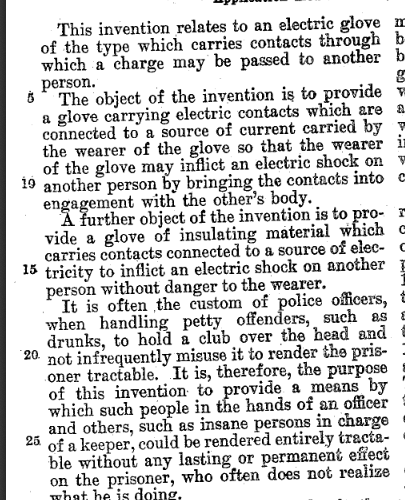
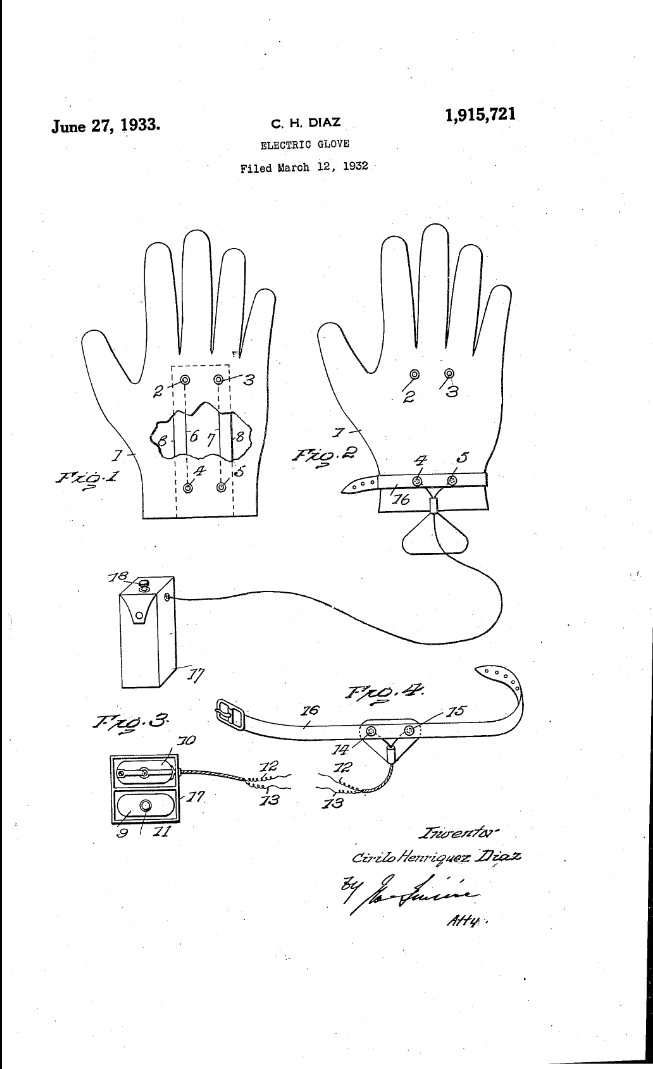
Posted By: Paul - Thu Sep 01, 2022 -
Comments (0)
Category: Inventions, Patents, Police and Other Law Enforcement, Sadism, Cruelty, Punishment, and Torture, 1930s
Moving Advertisements for Devices and Vehicles
Are you tired of screens at the gas pumps that flash ads? Or perhaps screens on buses and taxis that display same? You can perhaps blame Elias Atherton Lyon, who patented such a notion in 1910.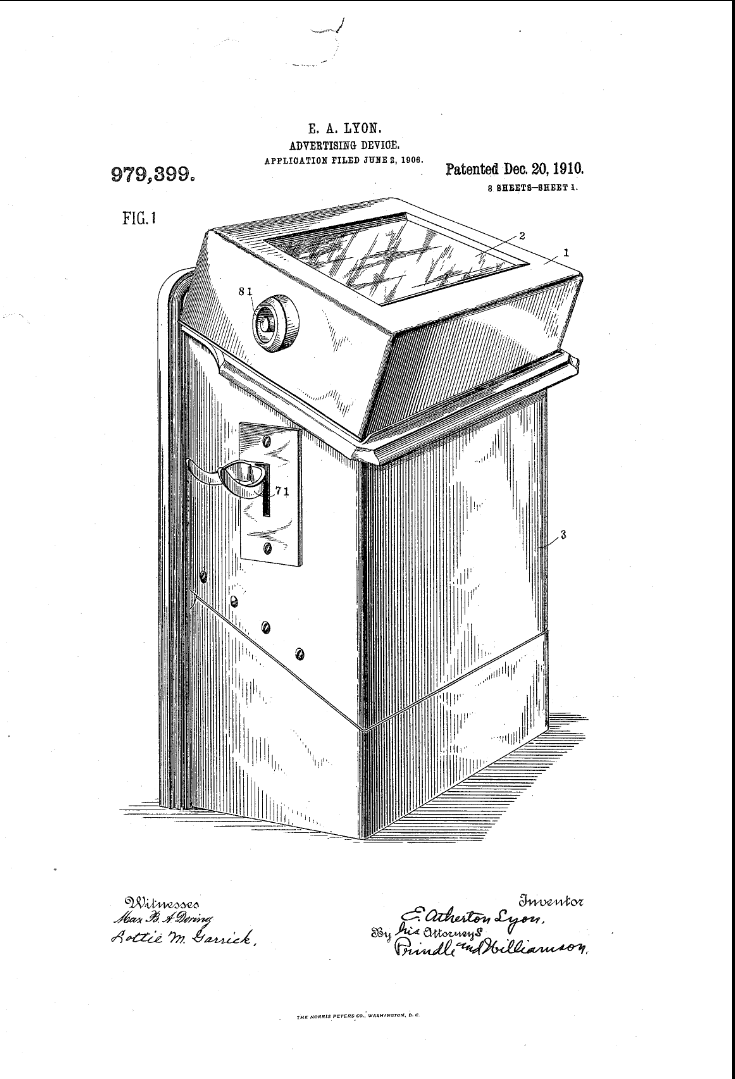
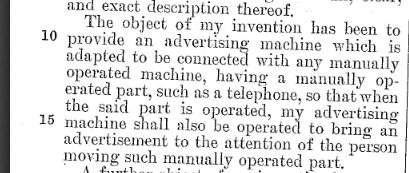
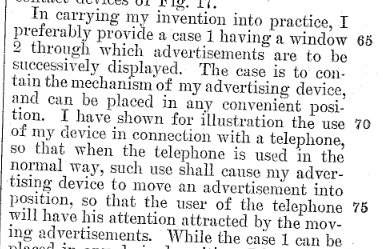
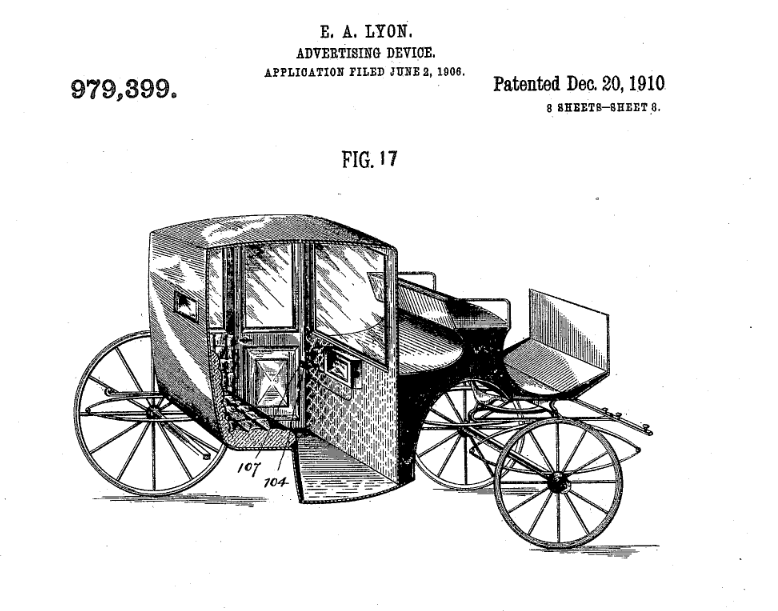
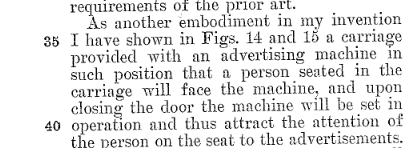
Posted By: Paul - Tue Aug 30, 2022 -
Comments (0)
Category: Inventions, Patents, Advertising, 1910s
The Fuse Ball
In 1926, Philip S. Kane of Pennsylvania received a patent for his "fuse ball" (Patent No. 1,583,721). It was a golf ball with a fuse. Before teeing off, you'd light the fuse, which would then start emitting smoke. That way, you could find the ball wherever you hit it, even if it landed in tall grass.According to various media reports, while testing his ball Kane accidentally set a wheat field on fire, but I haven't seen any proof to back up that story.

Posted By: Alex - Mon Aug 15, 2022 -
Comments (0)
Category: Sports, Golf, Patents, 1920s

| Who We Are |
|---|
| Alex Boese Alex is the creator and curator of the Museum of Hoaxes. He's also the author of various weird, non-fiction, science-themed books such as Elephants on Acid and Psychedelic Apes. Paul Di Filippo Paul has been paid to put weird ideas into fictional form for over thirty years, in his career as a noted science fiction writer. He has recently begun blogging on many curious topics with three fellow writers at The Inferior 4+1. Contact Us |




